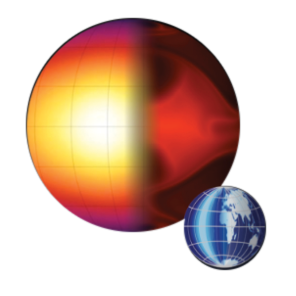The Exoclimes 2012 conference was held in Aspen, Colorado on January 16-20, 2012.

Conference Proceedings
PDF versions of the conference slides are now available here and PDF versions of some of the posters are available here.
The Conference Schedule is available (click here).
Online registration for the Exoclimes 2012 conference is now closed. The registration deadline was the 15th of October 2011.
The activities of the Aspen Center for Physics are supported by the US NSF (grant 1066293).
Confirmed Invited Speakers:
- Fran Bagenal (U of Colorado) - planetary magnetic fields
- Christiane Helling (St. Andrews) - atmospheric dust
- David Catling (U of Washington) - the history of Earth's atmosphere
- Adrian Lenardic (Rice U) - geodynamics
- Mark Marley (NASA Ames) - clouds
- John Marshall (MIT) - ocean dynamics
- Ray Pierrehumbert (U of Chicago) - climate system modeling
- Geoffrey Vallis (Princeton) - terrestrial planet atmospheric dynamics
- Adam Showman (U. Arizona) - giant planet atmospheric dynamics
- Remi Soummer (STScI) - direct imaging observations
Science organising committee:
- Suzanne Aigrain - Oxford
- Nick Cowan - chair, Northwestern
- Jim Kasting - Penn State
- Heather Knutson - Caltech
- Vikki Meadows - U Washington
- Kristen Menou - Columbia
- Ray Pierrehumbert - Chicago
- Frédéric Pont - Exeter
Planetary atmospheres are complex and evolving entities, as mankind is rapidly coming to realise whilst attempting to understand, forecast and mitigate human-induced climate change. In the Solar System, our neighbours Venus and Mars provide striking examples of two endpoints of planetary evolution, runaway greenhouse and loss of atmosphere to space. The variety of extra-solar planets brings a wider angle to the issue: from scorching “hot jupiters” to ocean worlds, exoatmospheres explore many configurations unknown in the Solar System, such as iron clouds, silicate rains, extreme plate tectonics, and steam volcanoes.
Exoplanetary atmospheres have recently become accessible to observations. What observations are possible in the foreseeable future? And how will they constrain the climate on other worlds?

